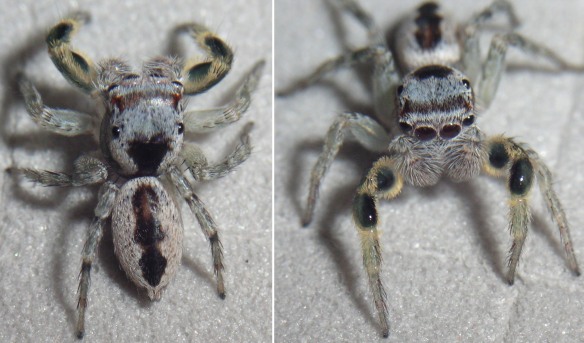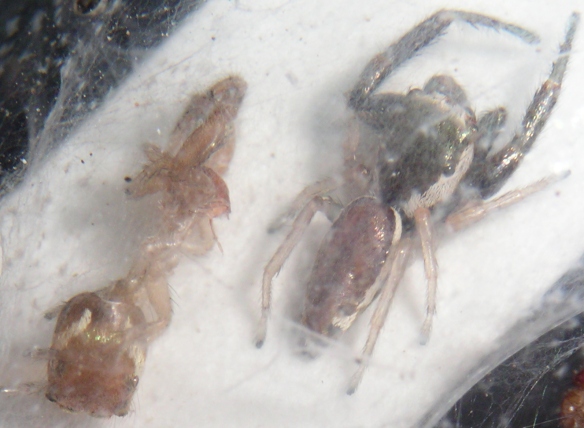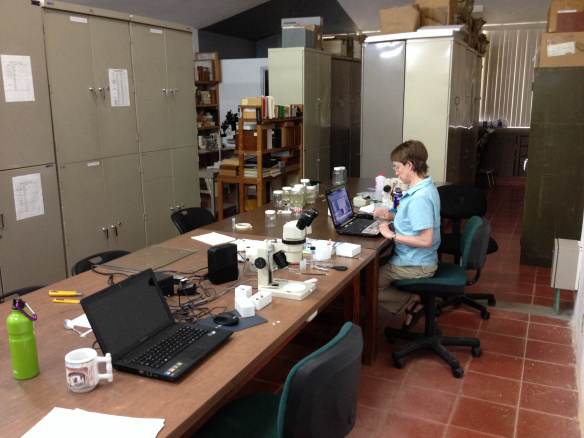In my last post, I showed the Anicius that moulted. In the same area I also collected a juvenile male Mexigonus. Here he is:

He looked unusual enough that I was pretty excited to see what he would look like as an adult, but even though I fed him well, he just hung out as a juvenile. Several days before we left Mexico, I noticed that he seemed a bit lethargic, and then I saw the telltale sign of an impending moult: his legs had fine stripes on them. These stripes are the new hairs all lined up under his old skin, ready to pop out and fluff up. Recalling how my skin itched when it peeled after a sunburn, I wonder: did this young male spider feel terribly itchy when he had a new skin under old?
I made sure his container was humid enough. Moulting is a dangerous time, and dryness can cause them to get stuck in the old skin and die. I waited. A couple of days later, I saw the old skin beside him, and this is what he looked like:

He’s still not quite darkened completely in this picture, but I couldn’t wait. How elegant! I’ve never seen a male jumping spider with first legs ornamented like that. Notice how there are two segments that have dark and shiny swellings, surrounded by a fringe of yellowish hairs.















